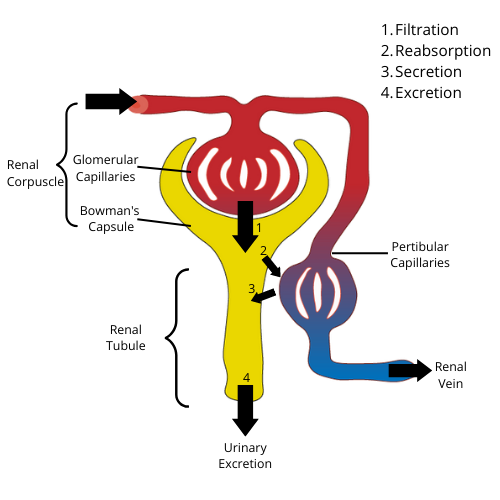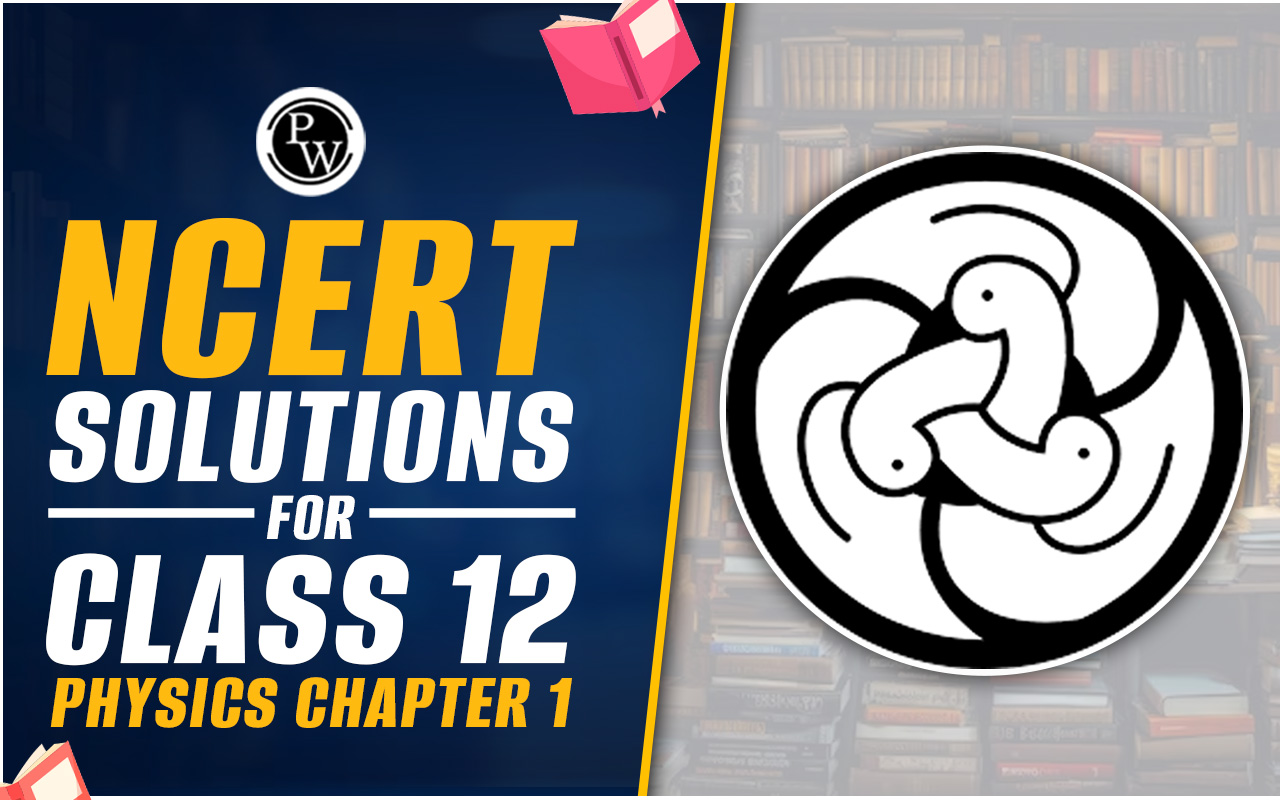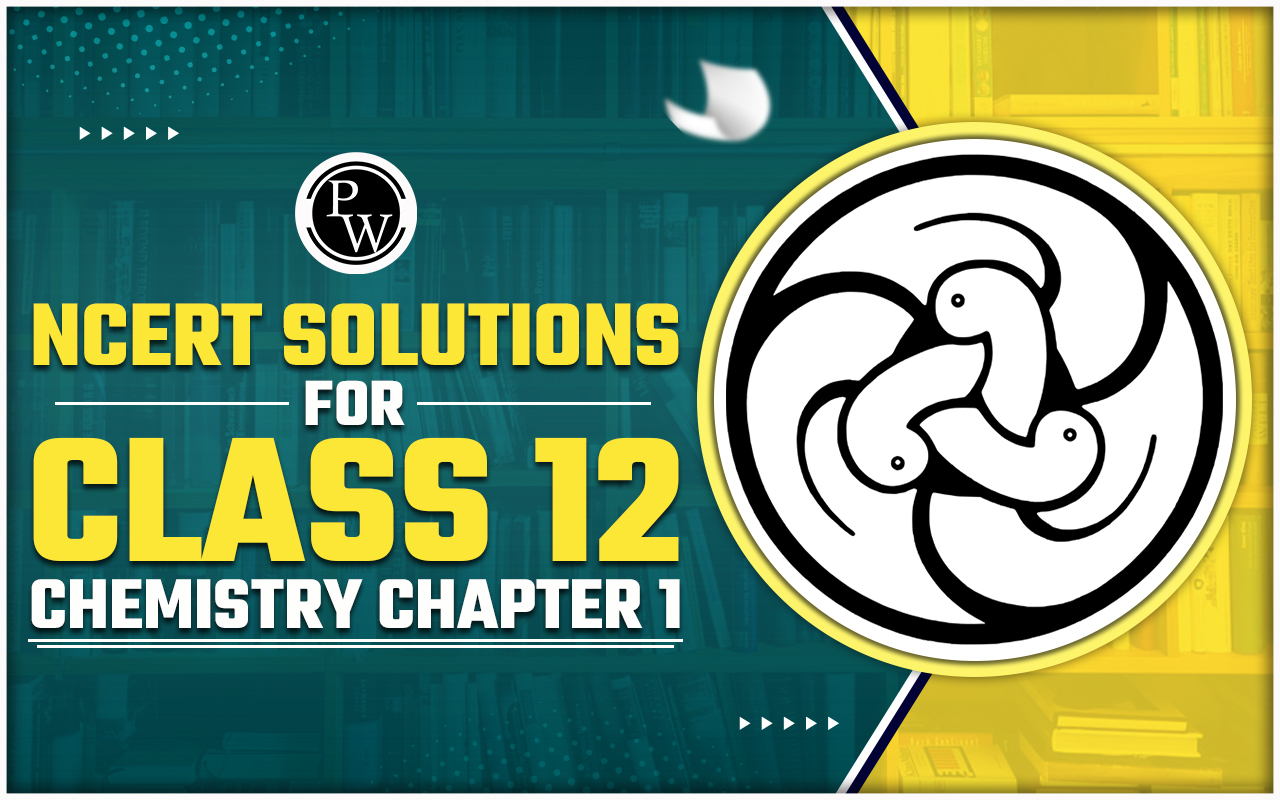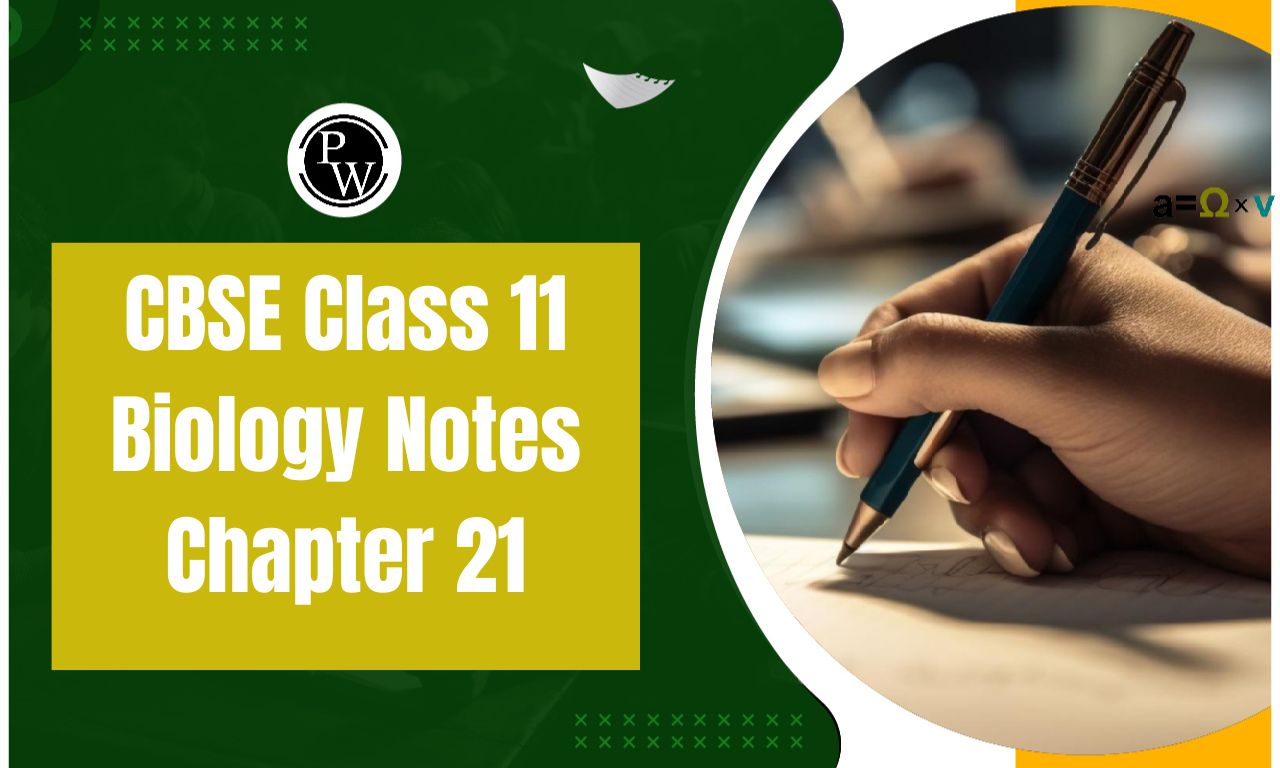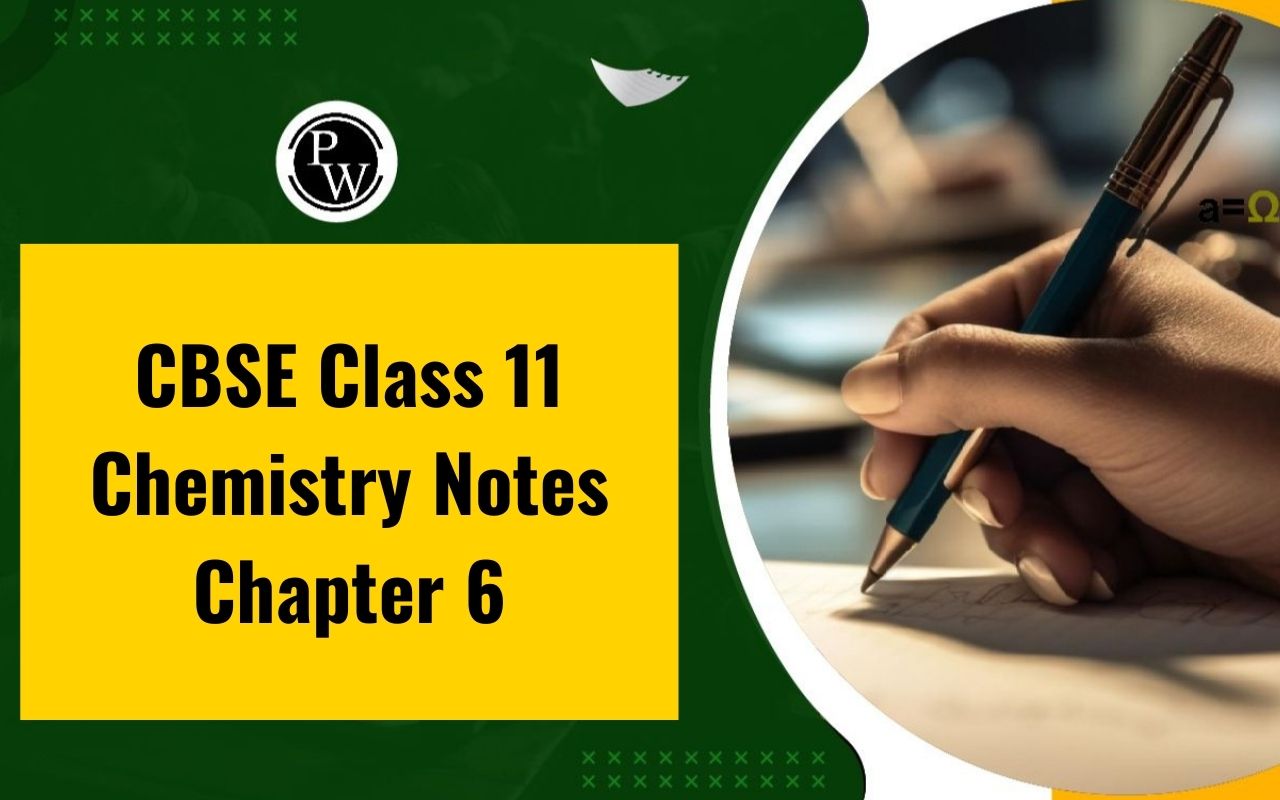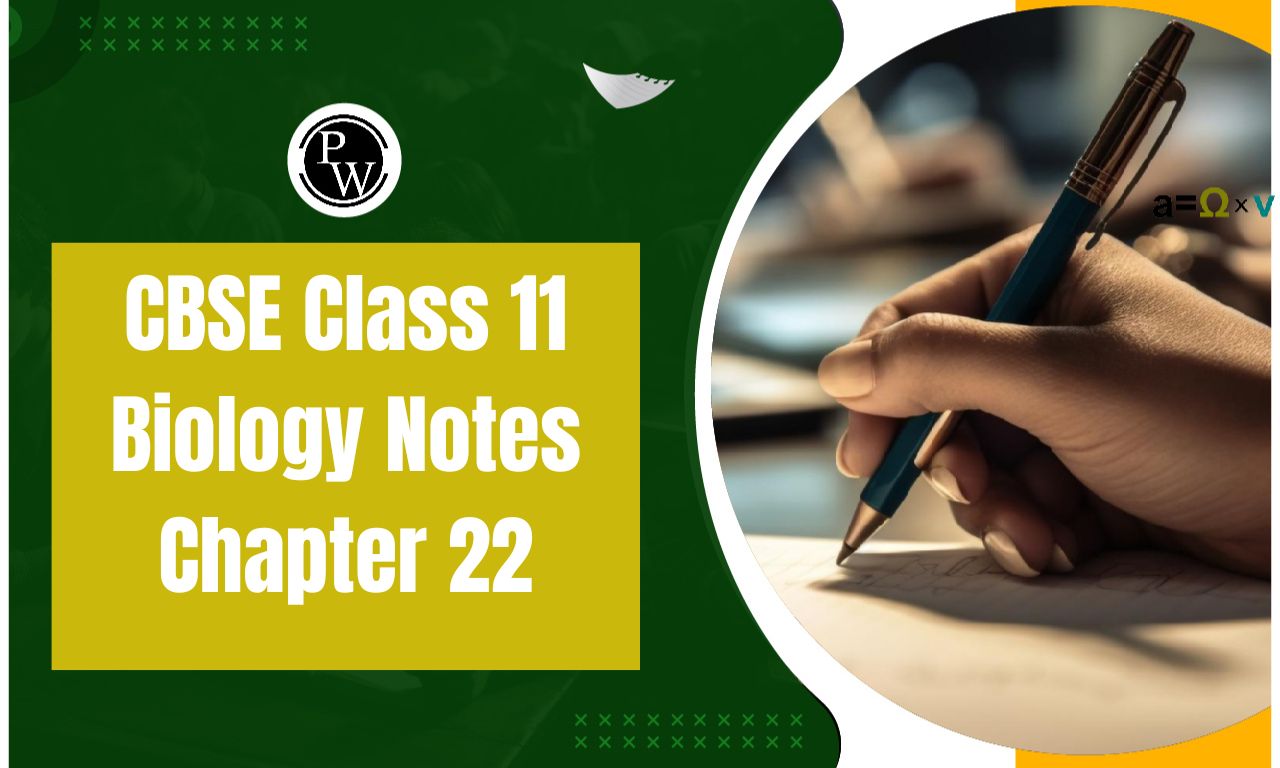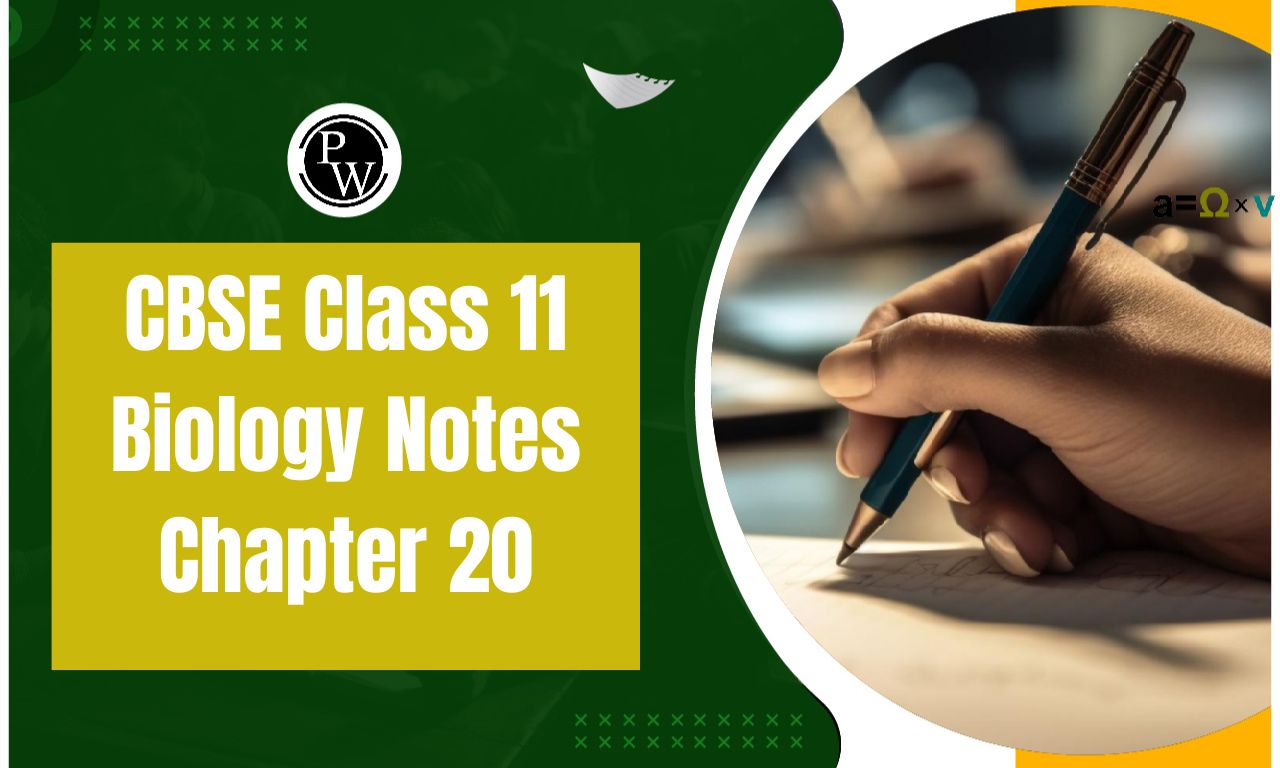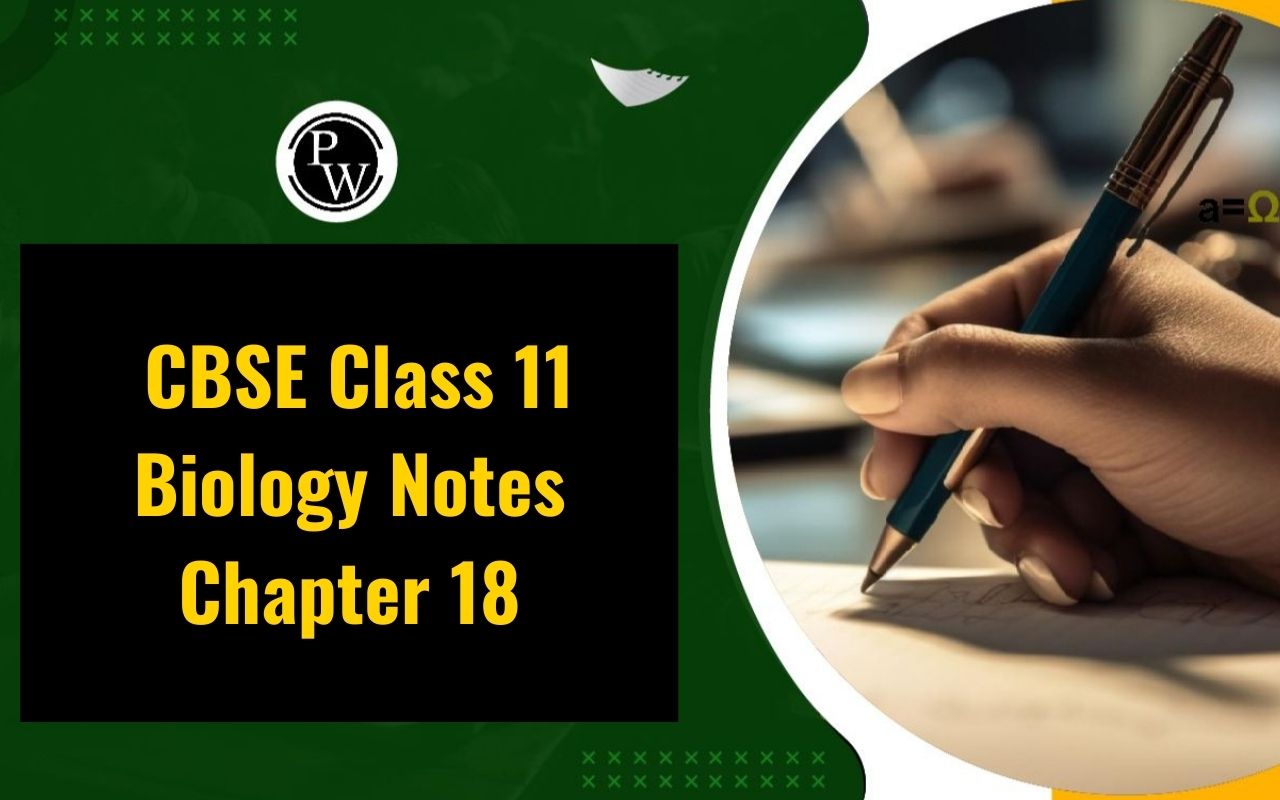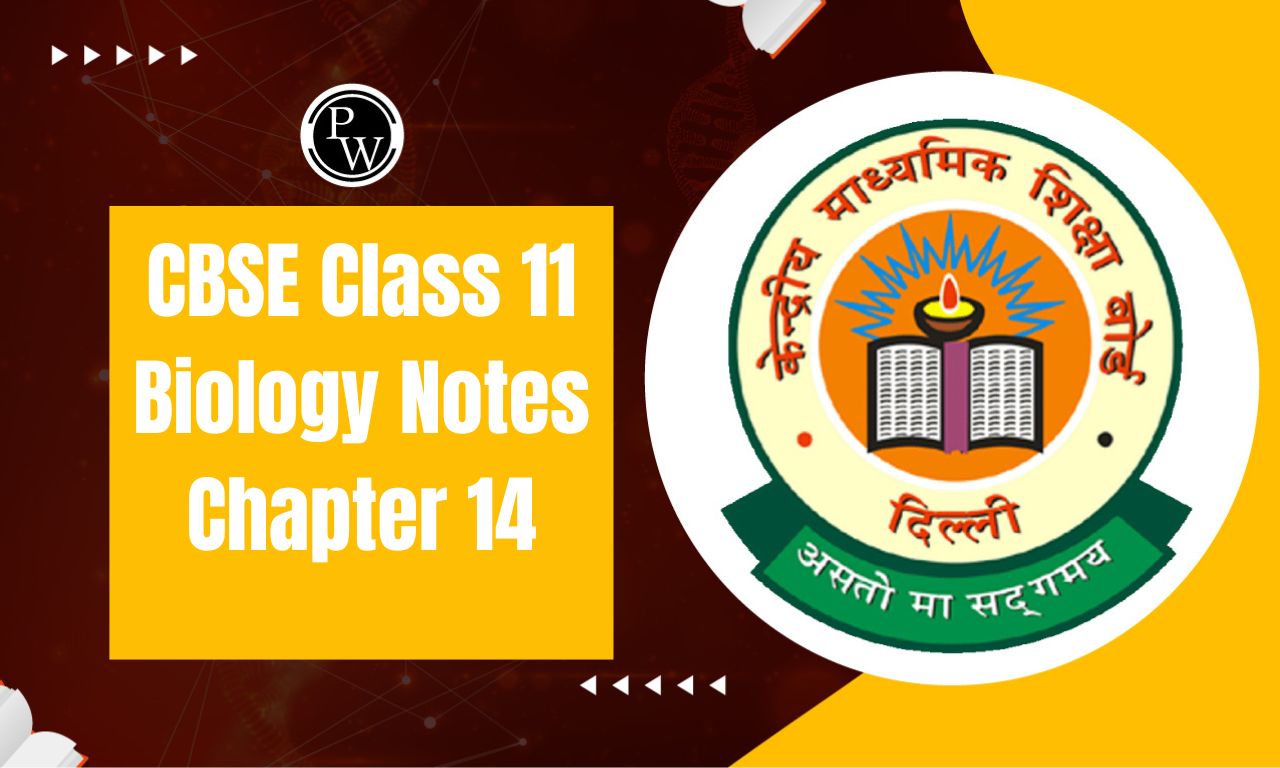
CBSE Class 11 Biology Notes Chapter 19: Chapter 19 of CBSE Class 11 Biology is all about how our bodies get rid of waste. It talks about the organs responsible for this, like the kidneys, ureters, bladder, and urethra. You'll learn how urine is made in the kidneys and how it's carried out of the body.
The chapter also covers how our bodies balance water and important substances, like salts, through hormones. It's not just humans—plants and other living things have ways of getting rid of waste too, and you'll learn about that too. With easy explanations and helpful pictures, you'll understand how our bodies stay clean and healthy by getting rid of waste.CBSE Class 11 Biology Notes Chapter 19 Excretory Products and Their Elimination PDF
You can find the PDF for Chapter 19 of CBSE Class 11 Biology Notes, which is about "Excretory Products and Their Elimination," by clicking the link below. This chapter talks about how our bodies get rid of waste through the excretory system. It explains how organs like the kidneys, ureters, bladder, and urethra work together to remove waste from our bodies. It also covers how urine is formed, the role of hormones in maintaining water and electrolyte balance, and how other living things get rid of waste. The PDF provides easy-to-understand explanations of these topics, making it helpful for students to learn and understand the concepts better.CBSE Class 11 Biology Notes Chapter 19 PDF
CBSE Class 11 Biology Notes Chapter 19 Excretory Products and Their Elimination
The solutions for CBSE Class 11 Biology Notes Chapter 19 "Excretory Products and Their Elimination" are available below. This chapter helps us understand how our bodies get rid of waste. It talks about organs like the kidneys, ureters, bladder, and urethra, which work together to filter blood, remove waste, and make urine. The notes also explain how hormones control kidney function and keep our body's water and electrolyte levels in balance. Overall, these solutions make it easier to understand how our bodies get rid of waste and keep us healthy.Excretory Organs Are Found In A Wide Range Of Organisms
The excretory structures across various organisms showcase remarkable diversity and adaptation to their respective environments. Amoeba and Paramecium, for instance, utilize contractile vacuoles to expel excess water and waste products, ensuring osmotic balance within their single-celled bodies. Sponges employ a canal system for excretion, where water currents transport waste materials out of the organism. The coelenteron of Hydra serves an excretory function, facilitating the removal of metabolic wastes. Platyhelminthes, like flatworms, feature flame cells that eliminate nitrogenous waste through specialized structures called protonephridia. Annelids, exemplified by earthworms, possess nephridia, which filter waste products from the coelomic fluid and excrete them out of the body. Prawns exhibit green excretory glands, likely associated with the elimination of waste products accumulated in their aquatic habitats. Insects, including beetles and grasshoppers, rely on malpighian tubules to remove nitrogenous waste and maintain internal homeostasis, reflecting the diverse adaptations of excretory systems across the animal kingdom.The Excretory System Of Humans
The human excretory system is a complex network of organs vital for filtering waste from the body and maintaining internal balance. It includes two kidneys, two ureters, a urinary bladder, and a urethra. Kidneys, shaped like beans, are situated in the abdominal cavity.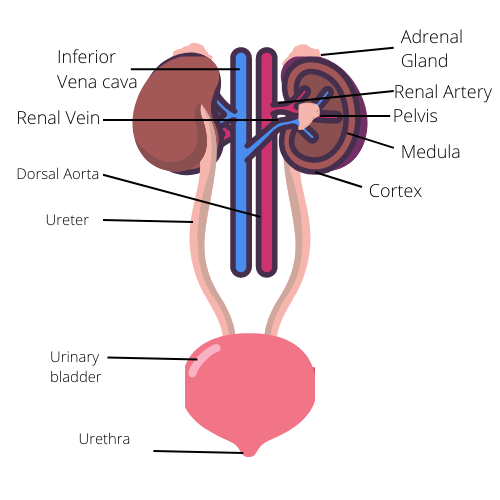 The right kidney is positioned slightly lower than the left one. Each kidney has a concave inner surface and a convex outer surface, with a notch called the hilum located in the center of the inner concave surface. The hilum serves as the entry point for the ureter, blood vessels, and nerves. Within the hilum lies the renal pelvis, a funnel-shaped space connected to calyces, which collect urine. The kidneys are further divided into the outer cortex and inner medulla.
The medulla consists of medullary pyramids, conical structures that help in urine formation. Separating these pyramids is the column of Bertini, an extension of the renal cortex. Together, these structures play a crucial role in filtering blood, removing waste, and regulating fluid balance in the body.
The right kidney is positioned slightly lower than the left one. Each kidney has a concave inner surface and a convex outer surface, with a notch called the hilum located in the center of the inner concave surface. The hilum serves as the entry point for the ureter, blood vessels, and nerves. Within the hilum lies the renal pelvis, a funnel-shaped space connected to calyces, which collect urine. The kidneys are further divided into the outer cortex and inner medulla.
The medulla consists of medullary pyramids, conical structures that help in urine formation. Separating these pyramids is the column of Bertini, an extension of the renal cortex. Together, these structures play a crucial role in filtering blood, removing waste, and regulating fluid balance in the body.
Labeled Diagram of Human Excretory System
The nephron is the fundamental unit responsible for the filtration and processing of blood in the kidneys. It consists of two main components: the renal corpuscle and the renal tubule. The renal corpuscle includes a cluster of capillaries called the glomerulus. Blood is brought into the glomerulus through the afferent arteriole and exits through the efferent arteriole. Surrounding the glomerulus is Bowman's capsule, a cup-shaped structure that collects the filtrate from the blood. Together, the glomerulus and Bowman's capsule form the renal corpuscle, also known as the Malpighian body.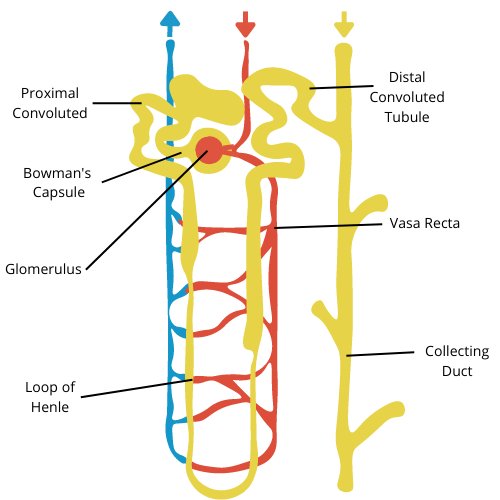
Labeled Diagram of Nephron of Human Kidney
Labeled Diagram Of Steps Involved In Formation Of Urine
Tubular reabsorption is a crucial process in kidney function, where necessary molecules like glucose and amino acids, as well as ions like sodium ions, are absorbed back into the bloodstream. Some substances are actively absorbed, while others are passively absorbed. Glucose and amino acids are actively absorbed, while water is passively absorbed.Urine Secretion: The final step in urine formation is secretion, where substances like potassium ions, hydrogen ions, and ammonia are released to maintain the body's ionic and acid-base balance.
Functions Of Tubules:
Proximal Convoluted Tubules (PCT): The PCT is lined with simple cuboidal brush border epithelium, providing a large surface area for reabsorption. It primarily reabsorbs electrolytes and water, contributing to the body's pH and ionic balance by secreting hydrogen ions, potassium ions, and ammonium ions into the filtrate.
Henle’s Loop: Henle's loop plays a vital role in maintaining fluid osmolarity. The ascending limb is impermeable to water but permeable to electrolytes, while the descending limb absorbs most of the water, concentrating the filtrate. Different segments of Henle's loop absorb differently, ensuring effective water and electrolyte balance.
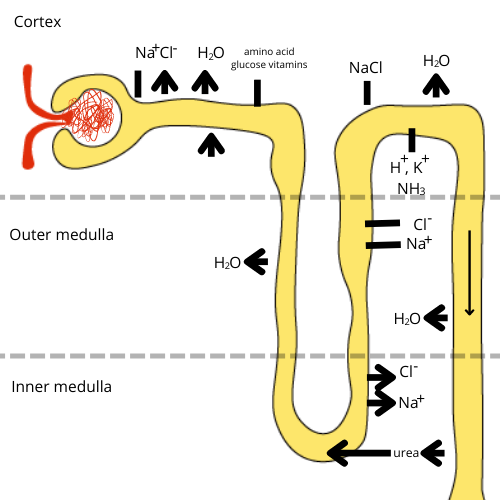
- These notes provide a detailed explanation of the concepts related to excretory products and their elimination, covering all the essential topics from the CBSE syllabus.
- The notes are written in simple language, making it easier for students to understand complex biological processes and mechanisms.
- Diagrams and illustrations are included in the notes to visually represent the concepts, aiding in better understanding and retention of information.
- The notes are well-organized, following a structured format that helps students grasp the sequence of concepts and their interrelationships.
CBSE Class 11 Biology Notes Chapter 19 FAQs
What is the excretory system, and what are its main functions?
What are the primary organs of the human excretory system?
What is the structural and functional unit of the kidney?
How is urine produced in the kidneys?
What are some disorders of the excretory system?

